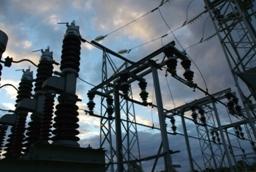MSc thesis project proposal
Matched subspace methods for outage detection in smart grids
Anomaly (and, especially, outage) detection is considered one of the cornerstone tasks in tomorrow’s smart networks. Unexpected events (tree falling, breaker failures) can make lines or part of the grid inoperative and cause cascade breakdowns within a few minutes. Developing methods able to promptly detect failures in smart networks is, therefore, a key task. Current works find line failures through phasor angle measurements and usually use exhaustive search methods to classify the line status. In this project, we will study graphbased detection approaches to detect (a) if a link outage happens, (b) in which area of the grid the failure occurs. With the aim of reducing the sensing costs (i.e., place fewer meters in the grid), facilitating concurrent and distributed detectors, and making the algorithms robust to missing data, we will address these tasks when only a few measurements are present. An efficient solution to this task is timely and aligns well with the European strategy for smart energy management. As such is highly appreciated in both academic and industry works since it is lined with practical challenges. Moreover, you will gain expertise in tools such as smart grids, network science, sparse sensing, and detection theory. This knowledge will enrich your background gained during the master classes and prepare you for the job market.
Assignment
The problem formulation for anomaly detection on smart grids is already developed, whereas the challenge is in including matched subspace detection and sparse sensing into the play. In this project, your task would be to derive an accurate model for detecting anomalies in smart grids based on matched subspace detector theory and merge the developed detector with sparse sensing tools. You will work with both simulated and real data and you are requested to compare the performance with other state-of-the-art approaches. More in particular, you will adopt the following approach: (a) Analyze the grid topology (in particular it’s graph Laplacian representation) to identify the subspace where the nodal voltage phases have more contribution. (b) Use the subspace representation to postulate a matched subspace detection theory for detecting link failures. (c) Leverage recent advances in sparse sensing to place a few phasor measurement units (PMUs) across the network that offer the minimum error probability. (e) Evaluate these detectors through the toolbox MATPOWER on two benchmark systems: the IEEE 118-bus and the PTSCA 300-bus system.
Requirements
To be able to successfully complete such task, you should fulfill the following requirements: - be a self-motivated student with a desire in making an impactful master thesis; - have strong linear algebra background; - have a good knowledge of tools applied from statistical signal processing, estimation and detection theory, and convex optimization; - respect deadlines in delivering the results; - advanced coding skills in Matlab, Python (preferred), R, on any other programming language.
Contact
prof.dr.ir. Geert Leus
Signal Processing Systems Group
Department of Microelectronics
Last modified: 2023-11-03
